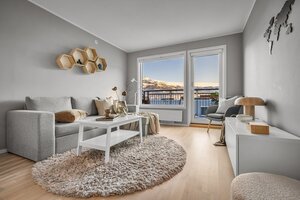Blog Information
- Posted By : Bella Virtual Staging USA
- Posted On : Jul 11, 2024
- Views : 613
- Category : General
- Description : As we look to the future of home decoration, it becomes clear that software for interior design will play a pivotal role in shaping trends and making sophisticated design tools accessible to everyone.
- Location : United States
Overview
The landscape of interior design is rapidly evolving, driven by advancements in technology and shifting consumer preferences. As we look to the future of home decoration, it becomes clear that software for interior design will play a pivotal role in shaping trends and making sophisticated design tools accessible to everyone. Here’s a glimpse into the future of home decoration through the lens of interior design software trends.
1. Integration of Artificial Intelligence (AI)
One of the most exciting developments in interior design software is the integration of artificial intelligence (AI). AI can analyze user preferences and suggest design elements that match their style and needs. For example, AI-driven software can recommend color schemes, furniture layouts, and decor items based on the user’s past choices and current trends. This level of personalization enhances the design process, making it faster and more intuitive.
2. Augmented Reality (AR) and Virtual Reality (VR)
AR and VR technologies are set to revolutionize the way we visualize and interact with interior design projects. AR allows users to overlay digital furniture and decor onto their real-world spaces using their smartphones or tablets. This technology provides a realistic preview of how different elements will look in a room, making it easier to make informed decisions.
VR takes this a step further by immersing users in a fully virtual environment where they can walk through their designs and experience the space in 3D. This technology is particularly beneficial for large-scale projects and for clients who struggle to visualize 2D and 3D renderings.
3. Cloud-Based Collaboration
As more people work remotely and teams become increasingly global, cloud-based collaboration tools are becoming essential. Interior design software that supports cloud collaboration allows designers, clients, contractors, and other stakeholders to work together in real-time, regardless of their physical location. This feature enhances communication, ensures that everyone is on the same page, and speeds up the decision-making process.
4. Sustainability and Eco-Friendly Design
Sustainability is becoming a crucial consideration in interior design. Software developers are responding to this trend by incorporating features that help designers create eco-friendly spaces. For instance, some programs include databases of sustainable materials and products, as well as tools for calculating the environmental impact of a design. This shift towards sustainability reflects a growing consumer demand for greener living spaces.
5. Enhanced 3D Modeling and Rendering
The future of interior design software will see continued improvements in 3D modeling and rendering capabilities. Advanced rendering engines will produce even more photorealistic images, helping clients visualize the final outcome with greater accuracy. Additionally, improved 3D modeling tools will allow for more intricate and detailed designs, giving designers the freedom to explore complex ideas and bring them to life.
6. Customization and Personalization
Customization will be a key trend in the future of home decoration. Interior design software is evolving to offer more options for customizing furniture, fixtures, and decor. Users will be able to tailor every aspect of their designs to suit their tastes and requirements. This trend towards personalization ensures that no two designs are the same, allowing for unique and individualized spaces.
7. Mobile Accessibility
With the increasing reliance on mobile devices, interior design software is becoming more mobile-friendly. Mobile apps allow users to design on-the-go, making it convenient to work on projects anytime, anywhere. This accessibility is particularly beneficial for busy professionals and DIY enthusiasts who want to maximize their productivity.
8. Data-Driven Design
Data-driven design is another emerging trend in the interior design industry. By analyzing data from past projects, user behavior, and market trends, software can provide insights and recommendations that enhance the design process. This data-driven approach helps designers make informed decisions and create spaces that are both functional and aesthetically pleasing.
Conclusion
The future of home decoration is being shaped by innovative software for interior design that integrates AI, AR, VR, and other advanced technologies. These tools are making it easier than ever to create personalized, sustainable, and visually stunning spaces. As software continues to evolve, it will empower both professionals and DIY enthusiasts to push the boundaries of interior design and transform their visions into reality. Embracing these trends will be key to staying ahead in the dynamic and ever-changing world of home decoration.
